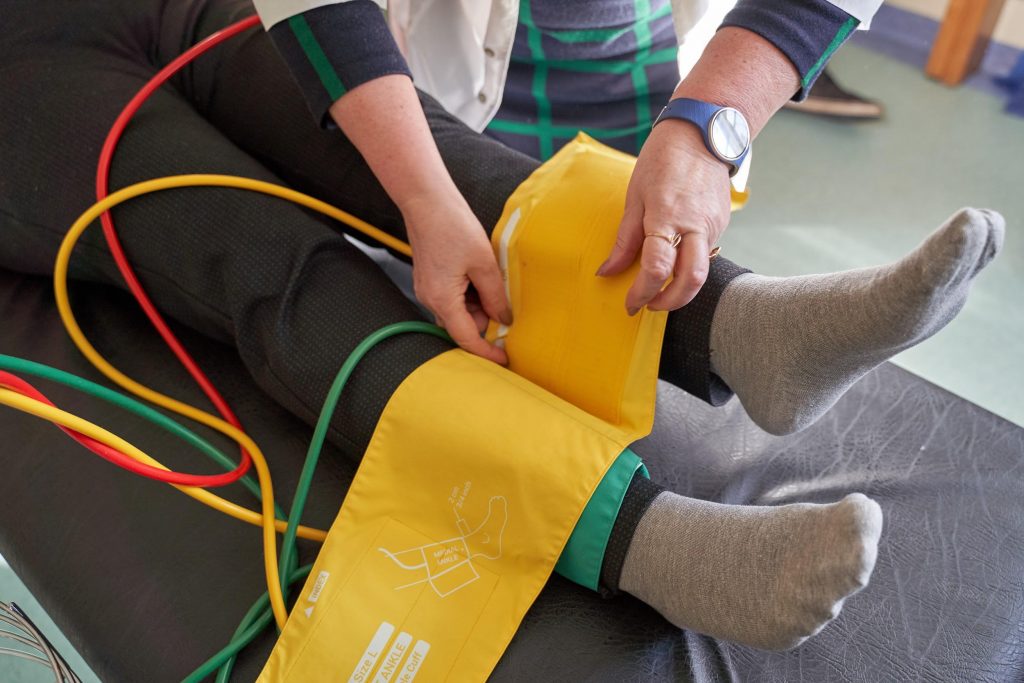In contrast to vein disease of the legs—which is a dilation of the veins—Peripheral Arterial Disease (PAD) is a narrowing of the arteries. This narrowing of the arteries is secondary to plaque buildup. As these vessels narrow, the muscles of the legs don’t get the necessary blood flow or oxygen, thus causing pain to the legs. This pain is made worse with exercise and is called claudication.








